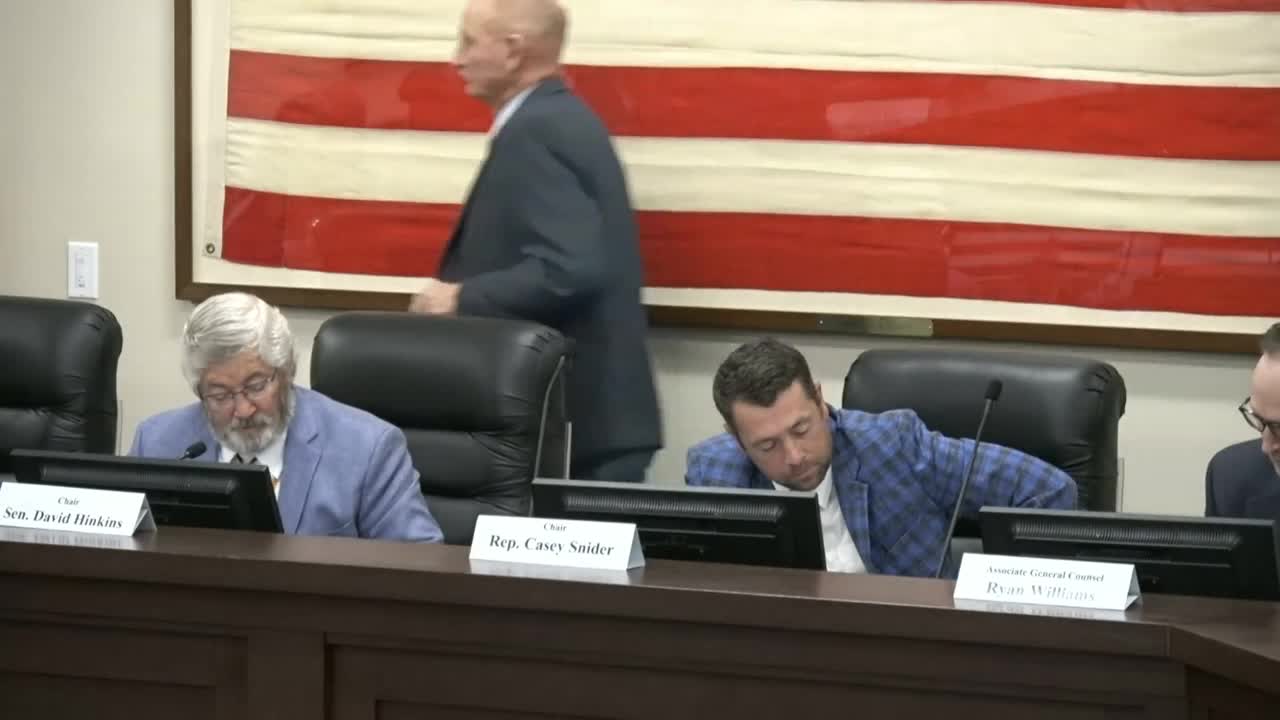Utah faces staggering 60 billion dollar water infrastructure crisis
October 17, 2024 | Utah Interim, Utah Legislative Branch, Utah
This article was created by AI summarizing key points discussed. AI makes mistakes, so for full details and context, please refer to the video of the full meeting. Please report any errors so we can fix them. Report an error »

The Legislative Water Development Commission convened on October 17, 2024, to address critical funding needs for water-related capital projects in Utah. The meeting highlighted the urgent requirement for substantial investment in the state's water infrastructure, with an estimated $60 billion needed to meet demands through 2060.
Candice Hosseiniager, director of the Division of Water Resources and chair of the Water Development Coordinating Council, presented a comprehensive overview of the current funding landscape. She emphasized that while various funding sources exist—including local water suppliers, state sales tax, and federal grants—there is a significant gap between available resources and the projected needs.
The council's discussions were framed by the recent passage of HB 280, which expanded the council's responsibilities to include reviews of water infrastructure issues and prioritization of projects. This legislative update mandates the completion of a state water plan by the end of 2026 and requires two critical studies on funding mechanisms for water infrastructure.
Hosseiniager reported that the American Society of Civil Engineers has identified areas where Utah's water infrastructure is underperforming, necessitating urgent repairs and upgrades. The projected costs include $38 billion for drinking water, $15 billion for water quality improvements, and $16 billion for irrigation and canal projects.
The meeting also revealed that federal funding for water projects has been declining, complicating efforts to secure necessary resources. Currently, the Water Quality Board has obligated $78 million for fiscal year 2025, with requests exceeding $100 million from six communities, underscoring the pressing demand for financial assistance.
In response to questions from commission members, Hosseiniager noted that while the state has set aside significant funds—approximately $250 million in the Water Infrastructure Restricted Account—there are strict limitations on how these funds can be utilized. The council is tasked with developing a prioritized list of projects to ensure effective allocation of resources.
As Utah's population continues to grow, the commission's discussions underscored the importance of proactive planning and investment in water infrastructure to sustain the state's future needs. The next steps involve completing the existing funds report and implementing recommendations to enhance the state's water management strategies.
Candice Hosseiniager, director of the Division of Water Resources and chair of the Water Development Coordinating Council, presented a comprehensive overview of the current funding landscape. She emphasized that while various funding sources exist—including local water suppliers, state sales tax, and federal grants—there is a significant gap between available resources and the projected needs.
The council's discussions were framed by the recent passage of HB 280, which expanded the council's responsibilities to include reviews of water infrastructure issues and prioritization of projects. This legislative update mandates the completion of a state water plan by the end of 2026 and requires two critical studies on funding mechanisms for water infrastructure.
Hosseiniager reported that the American Society of Civil Engineers has identified areas where Utah's water infrastructure is underperforming, necessitating urgent repairs and upgrades. The projected costs include $38 billion for drinking water, $15 billion for water quality improvements, and $16 billion for irrigation and canal projects.
The meeting also revealed that federal funding for water projects has been declining, complicating efforts to secure necessary resources. Currently, the Water Quality Board has obligated $78 million for fiscal year 2025, with requests exceeding $100 million from six communities, underscoring the pressing demand for financial assistance.
In response to questions from commission members, Hosseiniager noted that while the state has set aside significant funds—approximately $250 million in the Water Infrastructure Restricted Account—there are strict limitations on how these funds can be utilized. The council is tasked with developing a prioritized list of projects to ensure effective allocation of resources.
As Utah's population continues to grow, the commission's discussions underscored the importance of proactive planning and investment in water infrastructure to sustain the state's future needs. The next steps involve completing the existing funds report and implementing recommendations to enhance the state's water management strategies.
View full meeting
This article is based on a recent meeting—watch the full video and explore the complete transcript for deeper insights into the discussion.
View full meeting

